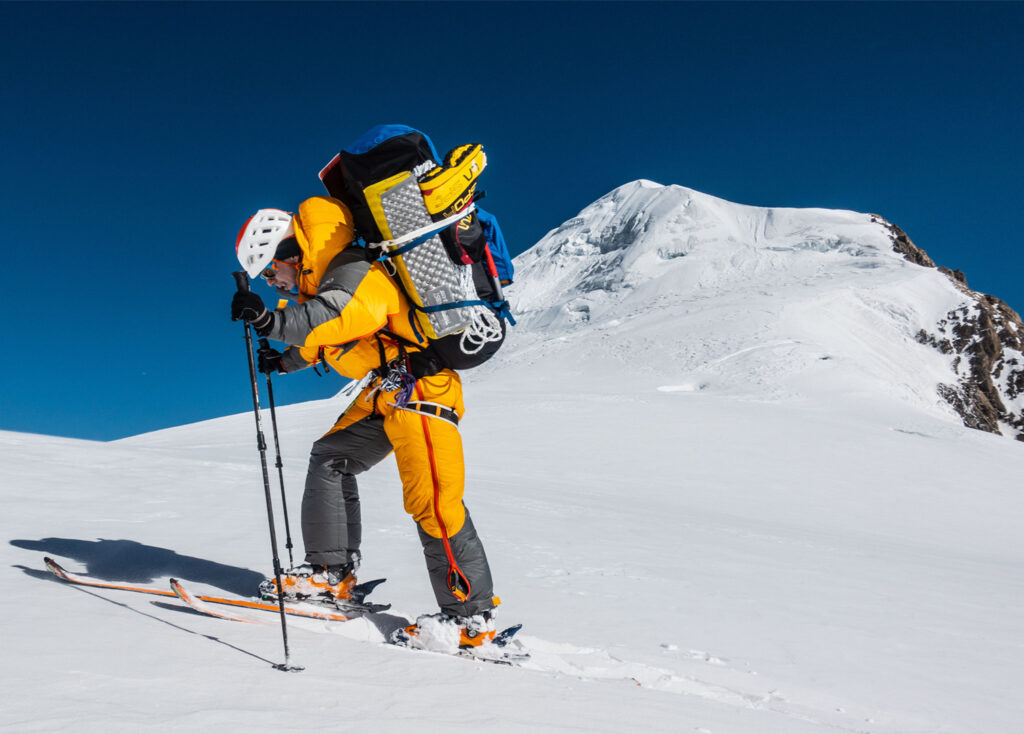Manaslu, the 8th highest mountain in the world, rises 8163 meters above sea level. It also is among the 3 mountains that lies entirely in Nepal, which means unlike most of the mountains of Nepal that share border with China or India, Manaslu lies entirely in the Gorkha district of Northern Nepal.
Manaslu was summited first time on May 9, 1956 by Japanese Toshio Imanishi and Nepali Gyaltsen Norbu. Manaslu was first summited in winter on January 12, 1984 by Polish Maciej Berbeka and Ryszard Gajewski.
As of now, most of the expeditions follow the NE face route which comparatively is less technical. The discovery of this route has led Manaslu being known as one of the attemptable 8000ers.
This is my story of climbing Manaslu in winter; a story of experience, learning, coping and adapting.
The Idea
Being an IFMGA/ UIAGM guide, exploring newer dimensions of mountaineering adventures entices me. I have been involved previously on many adventures apart of the regular expedition climbing and guiding. From exploring new routes in the Himalayan mountains to rescuing the stranded in high Himalayas, mountaineering is my profession and more than that a passion.
The idea of Manaslu winter came after summiting the mountain in spring for the first time in 2017. I found the slopes of Manaslu not very challenging and quite compatible to undertake a ski descent. The idea further took shape after meeting with the famed Nirmal Purja aka NimsDai. I was in Namche Bazar, back from an expedition when I did meet with NimsDai. It was early 2021. NimsDai shared with me his plan of summitting K2 in winter and asked me to join him. I was excited but was unsure if K2 would be appropriate as my first winter 8000er. K2 is known to the mountaineering community as the toughest 8000er even in the best weather. You’ve got to understand why there has not been the winter ascent of K2 till 2021 when most of the winter ascents were done already by the 1980s.
There was another thing going in my head. I had guided an expedition to Manaslu in 2017. The routes and geography were fresh in my mind and was sure Manaslu is not that tough of a deal. So, gave a shot and requested NimsDai to sponsor me for the winter Manaslu. He deliberately agreed. Now that was exciting. I was about to undertake my first ever winter 8000er.
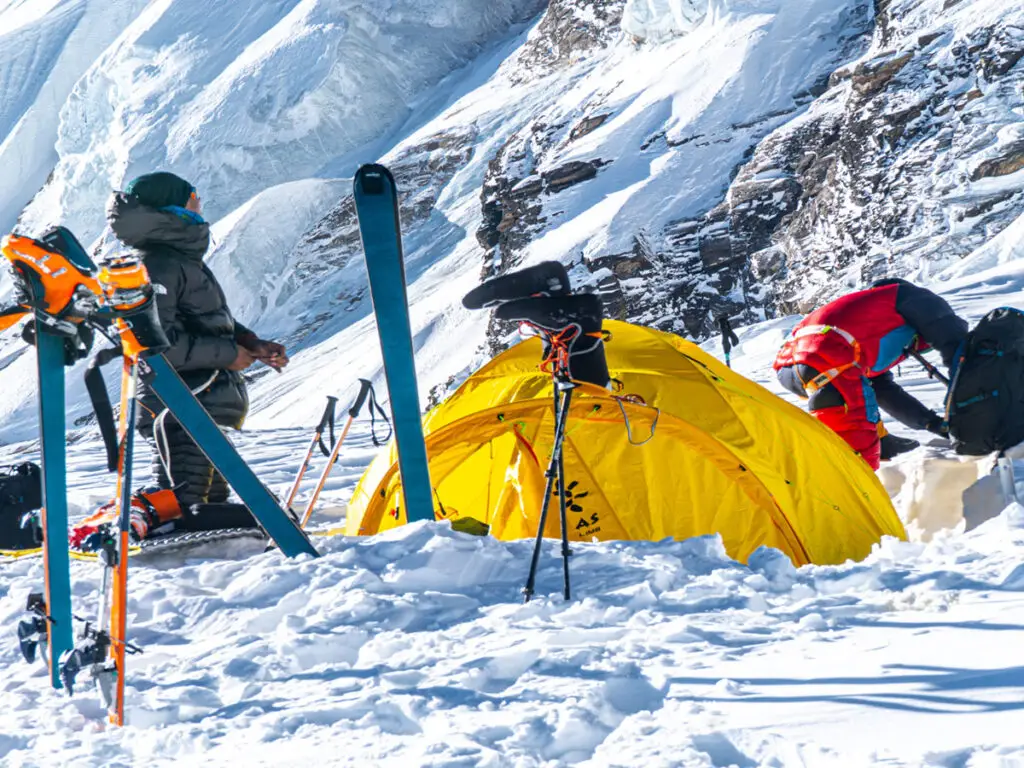
Planning and Preparation
Expedition planning is a science in itself. There are many components to consider. From managing logistics, food supplies, to technical gears, equipment, climbing partner, finances, and route assessment, expedition planning is climbing a mountain in theory. It is the blueprint of the undertaking.
One giant boulder was removed as the ascent was sponsored by NimsDai, which ensured fewer financial worries. Even better, Elite Expeditions (NimsDai’s company) provided tents and climbing gears. Now a challenge was finding a climbing partner who was both physically strong and mentally prepared to summit an 8000er in winter.
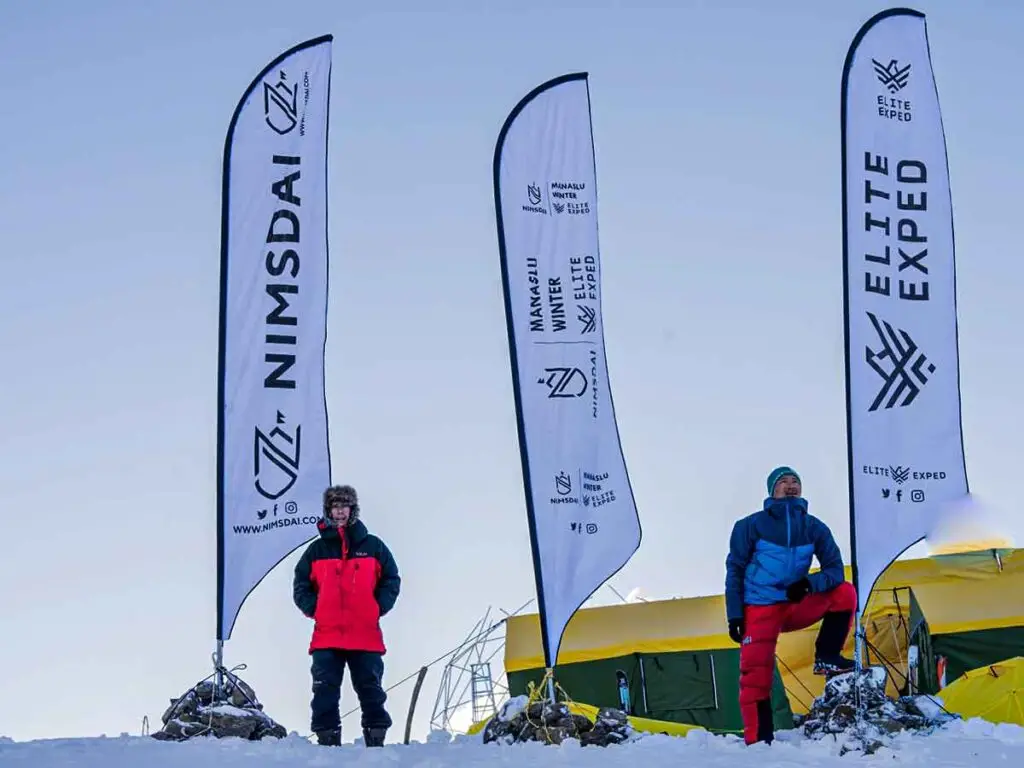
I had worked with Tenji Sherpa, an IFMGA/ UIAGM guide since …. He is a courageous fellow with impressive feats in mountaineering. I elaborated my plan with Tenji and he gracefully accepted to join. We now were a team of two prepared with finances, gears and logistics. There were many sessions of careful consideration regarding route planning, camping and objective hazards negotiation.
One other important factor of this ascent was our option of climbing in Alpinist style. An Alpinist style is one of the purest forms of mountaineering. It is characterized by the use of less everything and all by the climbers themselves, means no guides and porters. Alpinist style is also marked by the straight-on climbing. There are no acclimatization rotations. Once you start, you move up to summit and only back. Alpinist style is light, swift and fast but comes at a cost of an extensive planning, strength and courage. Since the winter summit offers a very little and often no weather window, Alpinist style is preferred as it is swift. We were only two, all by ourselves. It was definitely not going to be any less tough.
To spice and in fact ease things up, we had planned on making ski descent from Manaslu. Ski mountaineering is an emerging concept in the Nepal Himalaya, however a popular adventure in the Alps. Ski mountaineering eases climbers extensively when it comes to descending. For a mountain that takes 2,3 days to climb down can be skied down in matter of hours on a single day. But it comes with a cost of its own, major being the need to carry heavy skis up 8000 meters. And again, we were climbing in Alpinist style means, no helping hands, just ourselves.
To summarize, Tenji and I had planned to attempt Manaslu in winter in Alpinist stye, without bottled oxygen with Skis, to make ski descent!
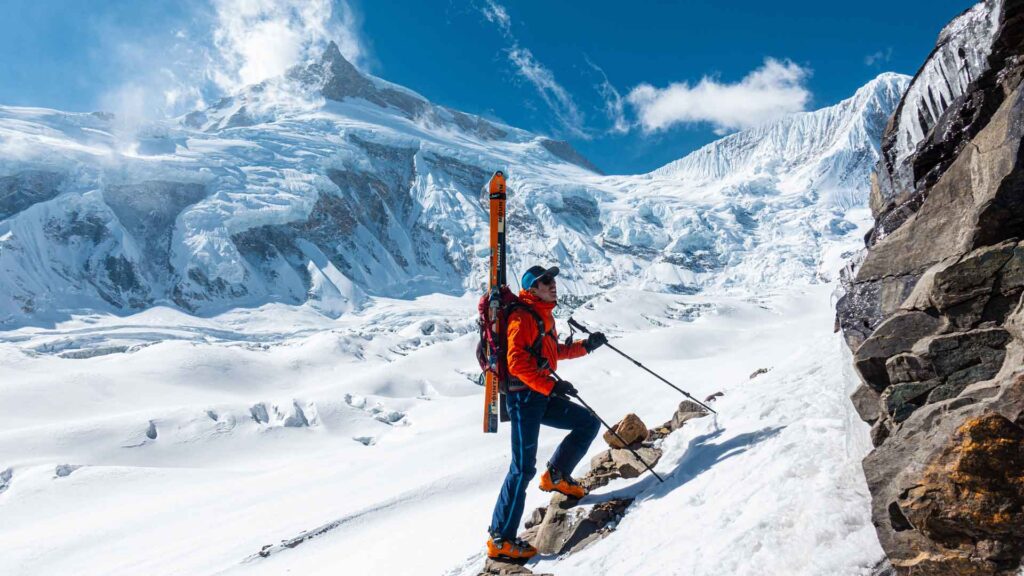
The Climb
We left Kathmandu in the end of December. The standard caravan route follows,
Kathmandu-Samagaon-
We felt off to a good start but mountaineering has a huge share of contingency with the nature. The weather turned horrific when we reached Samagaon, the vantage to Manaslu. So much so that we couldn’t make our move for 10 days. Things were not appearing very favorable. One thing was our permit, which was already acquired late. The Department of Tourism (DoT) issues permit of mountains above 6500 meters. Winter ascents in Nepal is permitted from December 1.
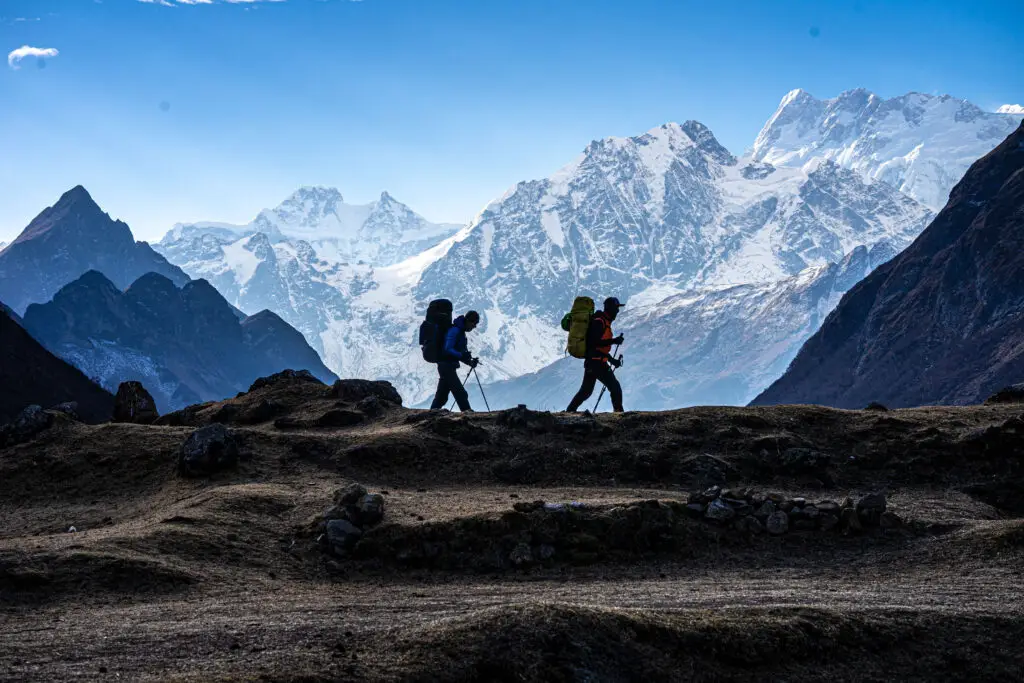
In my personal findings, I have seen the snow conditions and weather of Manaslu is relatively stable and climbable till the 1st of January which means if an expedition is started very early in December, it could make it to the summit in less excruciating way. We were falling behind the calendar. Snow and weather conditions start deteriorating horribly after January first week. Thus, this was one distinct weather window Manaslu offers.
We reached basecamp on … and prepared to make out move the next day. Weather didn’t favor but a mountaineer has to push on. There were other climbers attempting Manaslu winter. Simone Moro and Alex Txicon were at Manaslu again. Simone Moro is a veteran alpinist from Italy. He has attempted Manaslu 4th time now but no success. There was a misunderstanding within the media that were accompanying us as their guides. We were not.
Because of the high winds expected in the mountains over the next few days, we’ve set up camps at the base camp. We were acclimatized to the altitude and in good health. Beautiful days and breathtaking sunrises have been offset by the bitter cold brought on by the winter winds, which only grow as altitude is gained. We needed only three days of good weather, so all we were hoping for was a clear window to push ahead.
For five weeks, we gave it our all. We were emotionally and physically prepared, but never compromised our safety. On our way to Camp 2, we came upon an impassable crevasse. We altered the route, and because of that, the snow conditions, and the upcoming weather, it was not viable to make any move. We reached 6400 up there. Manaslu was showing her wrath. Everything that could go bad in winter was going bad. One thing that must be known about mountains in winter is that, it becomes a completely different mountain than that you’ve had dealt with in spring. The weather becomes as harsh as it could. There are piercing breezes and freezing cold always. Snowfalls are nonstop and to a climber’s horror, sugary and deep. You cannot hold on with your crampons on the sugar snow. Every step you take up, you are pushed back by two. Now that is winter pursuit of mountaineering.
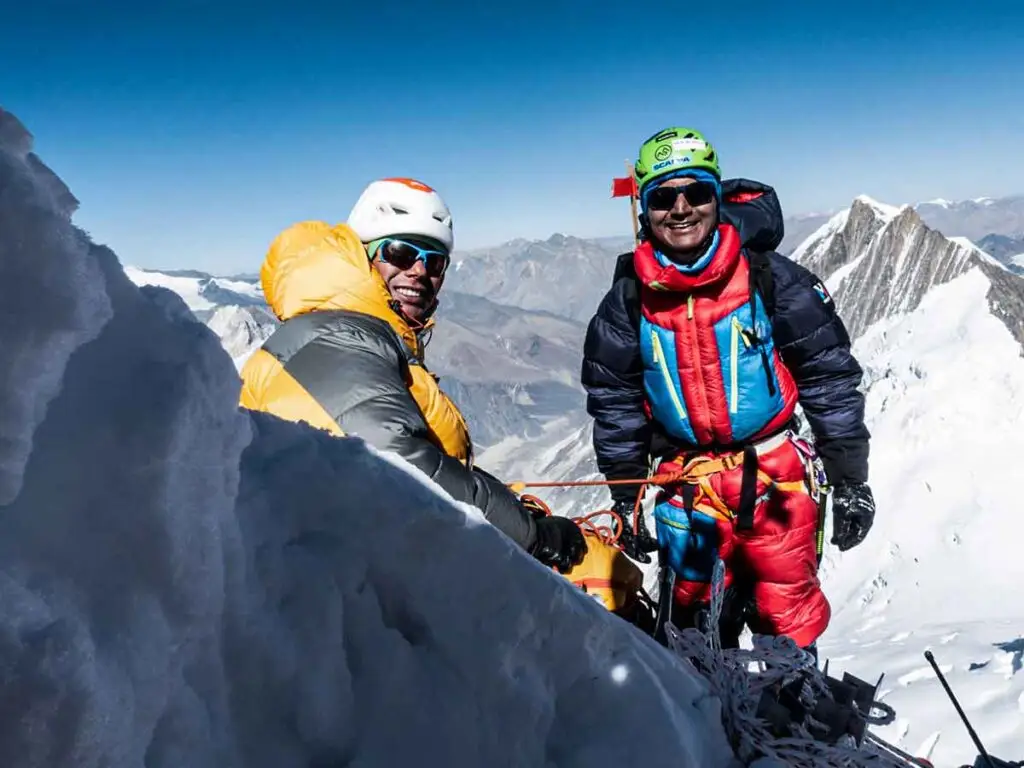
After relentless struggle, there we no signs of the weather becoming any good and apart from that, our permit was coming to an end. If someone even makes the summit after the permit expires, it would not be counted as a winter ascent and that was futile. Our health had started deteriorating and we were left with no options but to abort the expedition at 6400 meters.
No matter how well we plan and prepare, the decision is often made by the mountain. A winter summit is one of the truest challenges of mountaineering. We couldn’t achieve the summit but learned things in other ways. We won in knowledge, experience and maturity. I am eternally thankful to Manaslu. We spent a total of something 2 weeks on the expedition.
Aftermath
Mountaineering is most of what I do. Trying new things, exploring new routes, attempting unexplored adventures have always been my key fascinations. The Manalsu winter attempt was my first ever winter 8000er. The expedition was not successful if taken summit as the only success parameter. But deeper inside, we were learnt men when we returned. We understood the mountain a bit better, we understood the approach and timing better and overall, we had a better understanding of negotiating with an 8000er in winter.
I am still looking forward to make more winter climbs. I am looking forward to exploring new routes in the 6000 and 7000 meter mountains. If gotten the proper financial assistance, Manaslu can be attempted in winter again, who knows!

